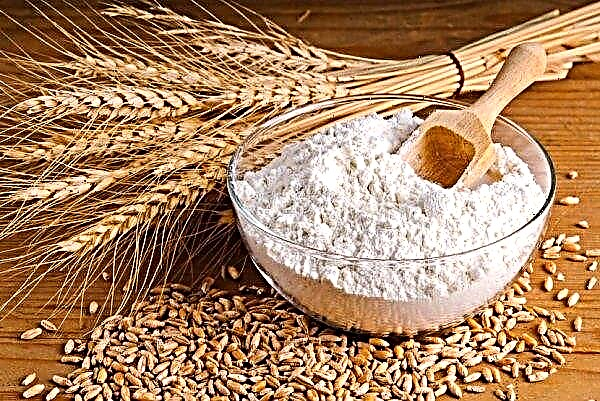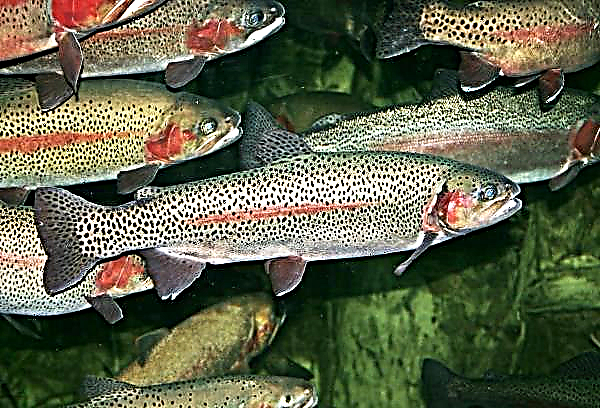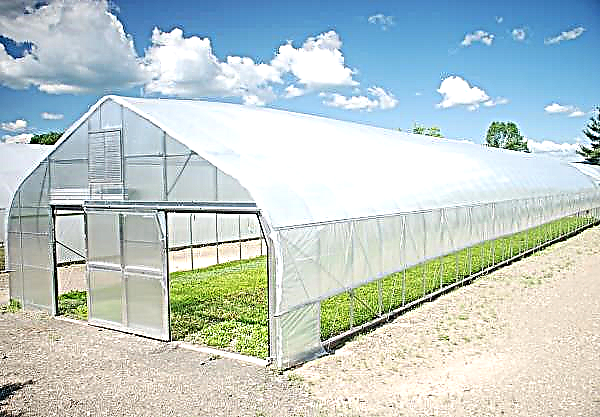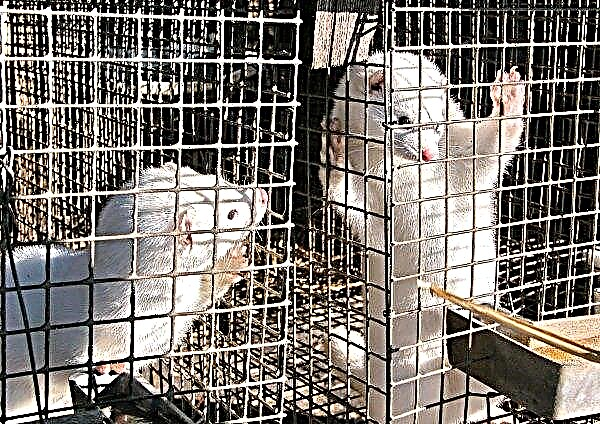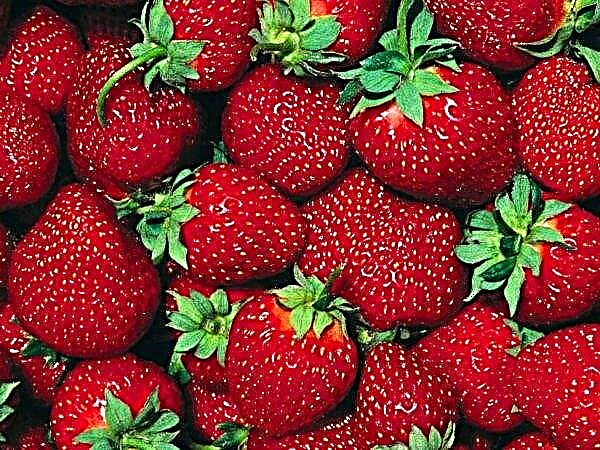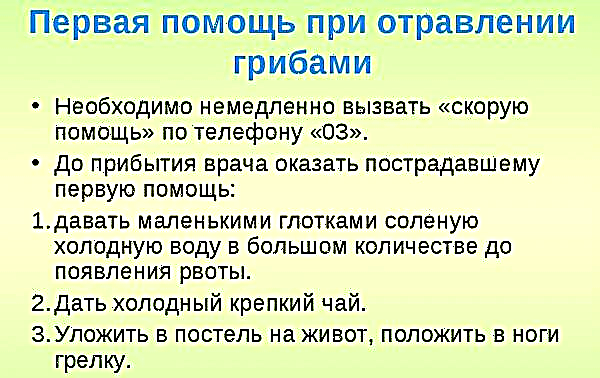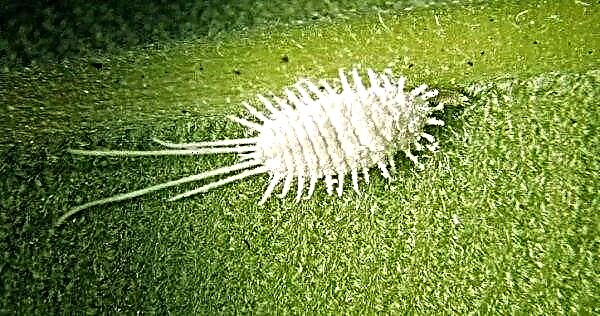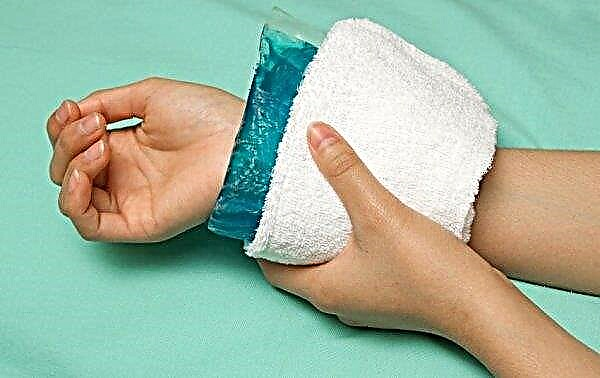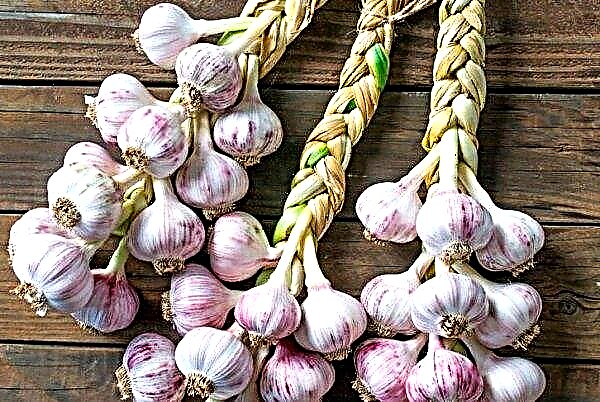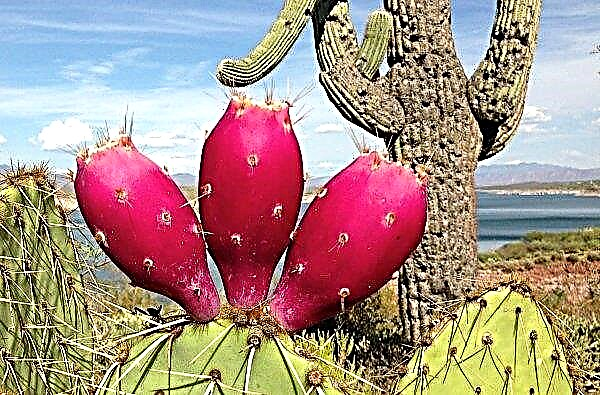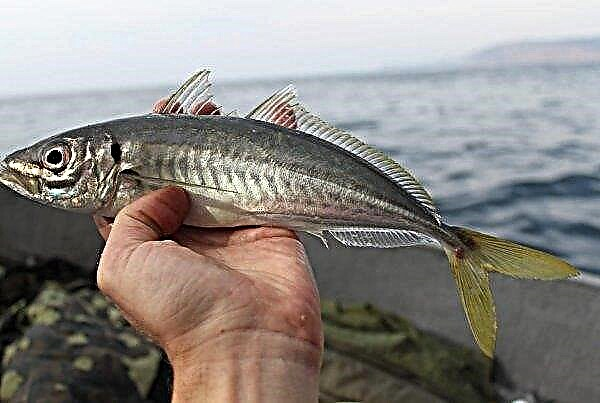Some gardeners prefer tomatoes that form small bushes that do not require garter and pinching. The variety Nastenka belongs to this type. We learn the description and characteristics of the tomato variety Nastenka, its advantages and disadvantages, agricultural cultivation, how to collect and store.
Characterization and description of the variety
The tomato variety Nastenka was obtained in 2008 by domestic breeders. Its originators are the agricultural company "Altai Seeds" and the farmer S. N. Kondakov. The variety was introduced into the state registry of the Russian Federation only in 2012. This is a hybrid of medium ripening, from which you can harvest 95-110 days from the emergence of seedlings.
This variety has medium-branched bushes of the determinant type, growing up to 0.7 m. Their small leaves are colored green, and the fruits, when ripe, have a red-pink color and a heart-shaped or oval shape. On each brush, up to 6–8 tomatoes can be tied, with an average weight of 150–200 g. They have excellent taste characteristics, a fleshy, sweet flesh with about 6 pieces of seed chambers.

These fruits are suitable for fresh consumption and for any preservation. Productivity is 1.5 kg per bush. With the right approach, from 1 m² you can collect up to 10-12 kg of fruits. It has an extended fruiting period. It can be grown on open beds and in protected ground.
Advantages and disadvantages
- A variety can attract gardeners with the following advantages:
- unpretentiousness;
- can be grown in all regions and in different conditions (greenhouse, open ground);
- crop stability;
- prolonged fruiting;
- excellent taste of fruits;
- universality of use;
- does not require formation and support.
Did you know? In pink varieties of tomatoes, the concentration of organic acids is lower, as a result of which they have a sweetish taste. This is important for people with high acidity and some other gastrointestinal problems.
- The disadvantage of the variety Nastenka include the following:
- requires a high agricultural background;
- the inability to use their own seed material.
Optimal growing time
Seeds for seedlings are sown in late February or March. With earlier crops, artificial lighting becomes necessary. When sowing, one must take into account that seedlings of tomato varieties with medium ripening periods are planted on beds at the age of 55-60 days, and seeds germinate for about a week (under optimal conditions). If a pick is planned, then a few more days are added to adapt the plants after transplantation into separate containers.

Tomato seedlings are planted on the beds when the soil has warmed up to + 12 ° C and the threat of cold weather has passed. In the middle zone of the Russian Federation, such weather usually occurs in early June. In the greenhouse, seedlings are planted 2 weeks earlier. That is, if you need to plant seedlings on June 1 at the age of 55 days, then the seeds are sown around the 20th of March, and the harvest of tomatoes of the Nastenka variety will begin to be harvested in early to mid July.
In the south of the country, seeds can be sown directly into the ground when it warms up to + 11 ° C. Such weather in the Kuban, for example, has been established since mid-April. If necessary, the place of sowing and seedlings should be covered with a film at night.
Did you know? Heat treatment does not impair the usefulness of tomatoes. The concentration of lycopene after boiling juice for sauce or ketchup only increases. Most of all this useful antioxidant in tomato paste is up to 1500 mg / kg.
Growing Features
In the northern regions and the middle zone of the Russian Federation, to obtain an earlier crop, the tomato variety Nastenka is grown only in seedlings.
Growing seedlings
If it is not indicated on the package of purchased seeds that they have been processed, then you will need to prepare the seed material for planting yourself. The first step is to disinfect the seeds, for example, by soaking for 20 minutes in a 1% solution of potassium permanganate.
Then they should be washed well. After this procedure, the seeds can already be sown immediately in the prepared soil. To test their germination, it is recommended to germinate them before planting. To do this, they are wrapped in a moistened rag for a couple of days. Then the bite seeds are used for planting.
Also learn how to grow other determinant varieties of tomatoes:
Tanks and soil are prepared in advance. Ready-made substrate for seedlings can be purchased at the store, or you can make it yourself by mixing the fertile layer of soil with a garden and humus 1 to 1. Self-made soil must be decontaminated - calcine in the oven, pour over boiling water or potassium permanganate.
First, the seeds are sown in a seedling tank with a depth of 5–8 cm. Grooves are made in them with a depth of 1 cm and rows between rows of 3-4 cm. The seeds are placed 2 cm apart and sprinkled with soil. Moisturize the crops, cover with a film and put in a warm place (+ 25 ... + 30 ° C). Until the seedlings appear, the tank is ventilated every day and the state of humidity is monitored.
The container with the emerged sprouts is transferred to a place with good illumination and kept for the first week at air temperatures + 13 ... + 16 ° C so that the seedlings do not stretch. Then, the temperature indicators of the room with seedlings can be increased to + 18 ... + 22 ° C. Nighttime temperatures should be several degrees lower than daytime.

After the appearance of the second true leaf, the plants are dived into separate containers. They should already have two real sheets. Plants begin to feed already a couple of weeks after germination and then continue to fertilize every 10 days. For top dressing at home, it is best to use ready-made complex fertilizer ("Agricola" or "Master").
Watering is carried out as necessary, when the upper part of the soil is somewhat dried up. To do this, use standing warm water. A couple of weeks before planting, seedlings begin to harden on the balcony, gradually accustoming to street conditions.
Preparation of a plot for planting seedlings
The beds are better prepared for planting tomatoes in the fall. For them, they choose a place well lit by the sun, where tomatoes and other solanaceous trees did not grow before that. It is best to plant after legumes, cabbage or beets. It is necessary to remove weeds, and dig the soil with the introduction of organic matter (manure, litter).
In the greenhouse, disinfection and soil changes must be carried out. If the beds were not prepared in the fall, then you can dig in the spring with the introduction of rotted manure or compost. For each m², it is recommended to add a tablespoon of potassium sulfate and double superphosphate and 0.5 l of ash.Important! Heavy clay soils are improved by introducing sand, sawdust, humus, and peat in the autumn. Sandy soil is weighed down with organic fertilizers and is done in the spring so that the introduced components are not washed out by melt and rain water.
Seedling Planting Technology
You can plant seedlings in a permanent place after 2 months from the moment of planting with seeds. The plant should already have 6–8 leaves in this period. It is necessary to plant seedlings in open ground in May, when the air warms up above + 12 ° С. It is better to plant in the morning in cloudy weather.

Seedlings are planted with a spacing between plants of 0.4 m in a checkerboard pattern. Aisles should be 0.5 m. For planting, holes are made with a depth of 20 cm and plants are planted by transshipment (with an earthen lump). Then abundantly watered, pouring about 1 liter of water under each root. When planting in open ground, plants should be covered from the cold at night with agrofilm.
Tomato Care
To get a good crop, proper care should be provided, which consists of watering, fertilizing, loosening the soil, weeding weeds, and controlling pests and diseases.
Fertilizers and watering
Tomato Nastenka needs regular watering. It must be carried out about 1-2 times in 7 days. If the weather is too dry, it should be watered every 1-2 days.
Important! Excess watering can lead to the appearance of fungal diseases, and a deficiency can cause color to fall and yield to fall.
For irrigation use settled and cold water. Watering and fertilizing must be carried out under the root. Drops of liquid should not fall on the leaves of plants - this can cause burns from the sun. The process itself is best done in the morning or evening hours.
During the fruiting period, do not overfill the tomatoes, as this can cause cracking of the tomatoes. Mineral or organic fertilizers are used to top tomatoes. You can also use folk recipes.

The first top dressing is done a week after transplanting seedlings. For this purpose, use the following solution - on a 10-liter bucket take 30 g of superphosphate. Phosphorus will help strengthen the root system.
The next fertilizer application is carried out after 10 days. Make the following feeding solution - 30 g of potassium sulfate is diluted in 10 l of liquid. During the flowering period, to obtain a good harvest, foliar feeding is carried out. Experts advise spraying the bushes with a solution of boric acid (1 g of substance is taken per 1 liter). It is good for feeding to take organic matter - rotted manure (bird droppings) or ash solution.
Pasynkovka and formation of a bush
Tomato Nastenka belongs to the undersized variety, so it is not worth it to stepchild. At the bush 3-4 stems are formed. When they grow, it is advisable to tie the bushes to the driven pegs in order to protect them from wind and rain. This will facilitate the care of the plant and prevent the fruit from falling to the ground.
Soil cultivation and weeding
After watering or rain, the soil needs to be loosened. This will improve the flow of moisture, nutrients and oxygen to the plant. The grown bushes during loosening does not interfere with a lightly spud. Such a procedure will contribute to the growth and strengthening of the root system. During cultivation, it is also necessary to carry out the removal of weed grass, which draws moisture and useful elements from the soil. If desired, beds with tomatoes can be mulched.
Diseases and pests and their prevention
The tomato variety Nastenka is resistant to the mosaic virus and late blight, but in case of violation of agricultural technology or adverse external conditions, diseases can occur. To combat and prevent the appearance of many fungal diseases, treatments using Bordeaux fluid are used.

In addition, tomatoes can be susceptible to the invasion of pests such as spider mites, scoops and whiteflies. Chemical preparations such as Decis and Aktara are used against such insects. As preventive measures, it is necessary to observe crop rotation, seed disinfection, carry out autumn digging of beds, as well as be sure to inspect plantings to identify the first signs of diseases or pests.
Harvesting and storage
Tomatoes for eating must be collected ripe. But for longer storage, the fruits are harvested at the stage of blange maturity. Store fully ripened tomatoes should be no more than 3 days. For longer storage, the fruits should be sorted out and sorted out damaged specimens.
Did you know? Tomatoes contain serotonin (the “hormone of happiness”) and thiamine, which is converted into it already in the body of the person who ate the fruit of a tomato. This helps fight stress and depression. It is believed that pink tomatoes are most useful for nerves.
If you save the stalk, the storage time will increase. For convenience, vegetables should be stored in wooden crates, which are covered with soft material. The storage area should be dark, dry, well ventilated. The recommended temperature is not more than + 23 ° С, humidity within 83–85%. The tomato variety Nastenka will provide summer residents and gardeners with delicious red-pink fruits of universal use for a long period.

